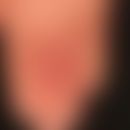Synonym(s)
DefinitionThis section has been translated automatically.
Frequently occurring symptom that requires very differentiated treatment (polyetiological) in numerous skin diseases or also in diseases of internal organs or systems (also occurring as a paraneoplastic syndrome).
It can also occur without a visible cause (old name: pruritus sine materia) or as a somatoform disorder.
To be distinguished are:
- the localized (sometimes also punctiform) or the diffuse, possibly generalized pruritus
- acute or chronic
- pruritus caused by external or internal influences.
Pruritus is often experienced as a differently perceived sensation of the skin and/or the semi-mucous membranes (tingling, stinging, burning, biting). It is reflexively responded to by squeezing, scratching, rubbing, or scrubbing, depending on its quality.
Itching may also be associated with small fiber neuropathy.
ClassificationThis section has been translated automatically.
For the subjective assessment of pruritus intensity, several methods exist, such as the "Itch Severity Scale" or the Visual Analog Scale (VAS), which distinguishes between 5 qualities (analog scale of 0-10), which are used here for the sake of simplicity:
- 0 = no pruritus
- 0,1-2,9 = slight/mild pruritus
- 3,0-6,9 = moderate/medium pruritus
- 7.0-8.9 = severe pruritus
- 9.0-10.0 = very severe pruritus
Basically, a distinction should be made between whether pruritus develops in normal or inflammatory skin.
- Pruritus in noninflammatory skin (pruritus sine materia):
- Endocrine and metabolic disorders:
- Chronic terminal renal failure (pure itching, occasionally attack-like, regularly very severe)
- Cholestatic pruritus (hepatopathies with cholestasis: occlusive icterus, medicinal cholestasis, primary biliary cirrhosis, hepatitis, primary sclerosing cholangitis: pure itching, mechanically inducible, not reducible by scratching) - see also liver diseases, skin changes.
- Diabetes mellitus (neuropathic itching, painful qualities like burning, stinging, tearing, intensity mild to severe depending on diabetes duration).
- Hyper- or hypothyroidism (rather mild)
- Hyperparathyroidism
- Senile pruritus caused by dry skin
- Infections:
- Worm diseases
- Epizoonoses.
- Hematologic and lymphoproliferative disorders:
- Iron deficiency
- Hemochromatosis
- Polycythemia vera
- Myelodysplastic syndromes
- M. Hodgkin's disease (pure itching)
- Cutaneous T-cell lymphoma (pure itching)
-
Plasmocytoma (pure itching)
- Solid malignancies:
- Cervical, prostate, colon carcinoma.
- Neurological disorders:
- Brachioradial pruritus (neuropathic, painful itching).
- Notalgia paresthetica (neuropathic, painful pruritus)
- Zoster neuralgia (itchy, painful)
- "small-fiber" neuropathies (vulvodynia, glossdynia, restless-leg syndrome)
- multiple sclerosis (5% pruritus)
- Neuropathies of different genesis (infarcts of the CNS).
- Mental disorders:
- Somatoform disorders
- Schizophrenic psychoses
- Tactile hallucinosis
- Pseudo-pruritus in artifacts.
- Drug-induced (see pruritus drug-induced):
- e.g. due to ACE inhibitors or fumarates (bright excruciating itch, improved by rubbing)
- Endocrine and metabolic disorders:
- Pruritus in inflammatory skin (pruritus cum materia):
- Autoimmune dermatoses:
- Bullous autoimmune dermatoses(bullous pemphigoid, paraneoplastic pemphigus, pemphigus vulgaris)
- IgA linear dermatosis
- Dermatitis herpetiformis.
- Neoplasms (with direct skin involvement):
- Cutaneous T-cell lymphoma
- Leukemic infiltrates of the skin.
- Infections of the skin:
- Mycoses of the skin
- Zoster (also postzosteric)
- Herpes simplex recidivans
- Pyoderma
- Infectious exanthema (e.g. scarlet fe ver in healing).
- Epizoonoses:
- Autoimmune dermatoses:
- Inflammatory skin diseases of different genesis characterized by relevant itching (pruritus cum materia):
- Atopic eczema
- Contact allergic eczema
- Exfoliative dermatitis(e.g. healing dermatitis solaris)
- Acanthosis nigricans
- Epidermolysis bullosa disorders
- Erythroderma of different genesis
- Hemorrhoidal disorders
- Hyper IgE syndrome
- Hypereosinophilia syndrome
- Lichen amyloidosus
- Lichen simplex chronicus (Vidal)
- Lichen sclerosus et atrophicus (burning, stinging, better after rubbing)
- Polymorphous light dermatosis (pure itching, burning)
- Cutaneous mastocytomas (after irritation)
- Pernions (painful, less itching)
- Pityriasis lichenoides chronica
- Prurigo diseases
- Psoriasis
- pregnancy dermatoses (e.g. PUPPP)
- Seborrheic eczema of the infant
- Adverse drug reactions (especially urticarial or lichenoid drug exanthema; pruritus after HAES infusions)
- Urticaria pigmentosa (after irritation)
- Urticaria (light itching, no scratching, better after rubbing)
You might also be interested in
Occurrence/EpidemiologyThis section has been translated automatically.
Pruritus is the most commonly complained symptom in dermatology and yet, to date, few reliable scientific studies exist on the pathophysiology, incidence and prevalence of pruritus. The incidence of chronic pruritus in general medical patients is estimated to be about 8%.
It is now known that the nerve fibers that conduct pruritus are free unmyelinated nerve endings that occur with particularly dense branching in the epidermis of the skin, mucous membranes, and cornea. The information received there is carried on with the signals for pain and thermal sensations first in the ipsilateral, after synaptic connection in the contralateral tractus spinothalamicus lateralis. Divergent information currently exists about processing in the brain. Activity has been found in both motor and sensory areas of the cortex. Thus, although pain and itch seem to use the same pathways, no subcortical activation has yet been found in itch, unlike pain.
EtiopathogenesisThis section has been translated automatically.
- So far, numerous potential chemical mediators of pruritus have been identified:
- Histamine from mast cells and keratinocytes binds to H1 and H2 receptors on peripheral nerve endings. This results in depolarization of the nerve and release of the neuropeptide substance P. Histamine can inhibit SP release via H3 receptors.
- Acetylcholine: Neurotransmitter of the autonomic nervous system. Release is also possible from keratinocytes. Binding to muscarinergic (M1-M5) and nicotinergic receptors. Functionally, it primarily mediates pain (nociception). Stimulation of M3-receptors and nicotinergic receptors mediates itching, e.g. in atopic eczema.
- In the skin bradykinin mainly causes pain via the B2 receptor but also causes a degranulation of mast cells and enhances e.g. the histamine effect at the nerve fibre, the release of substance P and prostaglandin E.
- Serotonin acts via serotonin 3 receptors to promote itching. However, serotonin 3-receptor antagonists do not show any effect on nephrogenic itching.
- Endothelin is produced by endothelial cells and causes a neurogenic inflammatory response associated with burning itching by stimulating nerve fibres and releasing NO.
- Vanilloid receptors on sensitive skin nerves are cation channels that bind vanilloids and are also activated by capsaicin and heat. They mediate burning pain and itching. Repeated capsaicin application leads to desensitization of the nerve fiber and suppression of itching.
- Proteinases such as trypsin, chymotrypsin and papain also appear to trigger itching, which can be blocked by antihistamine administration. Trypsin from mast cells activates PAR-2 (proteinase activated receptor 2), which is expressed on peripheral nerve fibres. Elevated concentrations of trypsin and PAR-2 have been found in patients with atopic dermatitis.
- Sensitivity modulation:
- Prostaglandins potentiate histamine-induced itching and are also capable of inducing mild itching themselves.
- Interleukins: IL-2 causes itching by activating C-nerve fibers. IL4 can cause atopic eczema-like skin changes in mice. IL-6 and the IL-6 receptor are expressed in nerve cells and are found in increased amounts e.g. in prurigo papules.
- Neurotrophins and Nerve Growth Factor (NGF) cause nerve growth. NGF and neurotrophin-4 from keratinocytes are overexpressed in Prurigo nodularis and in atopic dermatitis.
- Opioids (e.g. β-endorphin, enkephalins and endomorphins) seem to reduce the sensitivity of peripheral nerve endings via various opioid receptors by inhibiting e.g. substance P release. However, systemically administered opioids can induce itching.
- Cannabinoids reduce histamine-induced itching via CB1 and CB2 receptors. For the treatment of chronic pruritus, cannabinoid agonists were used topically in one study. In 86.4% of the test persons a significant reduction of itching occurred after several weeks of therapy.
- The activation of the cold receptors CMR1 and ANKTM1 (ion channels) by cooling of the skin surface leads to a reduction of itching.
-
Eosinophil granulocytes:
- In the skin, eosinophil granulocytes are often found near peripheral nerve fibres in inflammatory allergic diseases. For example, eosinophilic granulocytes in Prurigo nodularis are in direct contact with peripheral nerves. EDN and ECP have neurotoxic effects. EDN can be detected in lesions of patients with Prurigo nodularis. Eosinophil granulocytes can release neurotrophins such as NGF (nerve growth factor) and BDNF (brain-derived neurotrophic factor). BDNF prevents the apoptosis of eosinophilic granulocytes. Neurotrophins are known for their neurotrophic and neuroprotective activity. Furthermore, neurotrophins induce chemotaxis of eosinophilic granulocytes. They are therefore important mediators for the influence of cutaneous inflammation. They play an important role in the process of sensitization and in the development of pruritus. Besides neurotrophins, eosinophil granulocytes can also release neuropeptides such as substance P, VIP (vasoactive intestinal peptide). Both mediators are involved in the mediation of pruritus.
- mast cells:
- Vasoactive intestinal peptide, neurotensin, somatostatin, secretin as well as substance P and corticotropin-releasing hormones (CRH) induce itching, wheals and erythema by degranulation of mast cells.
- Substance P acts via neurokinin receptors on mast cells and the release of NO. Stress leads to increased substance P and CRH concentrations in the skin and thus to mast cell degranulation.
- Together with substance P, the neuropeptide calcitonine-gene-related peptide (CGRP) is frequently found, which possibly has an inhibitory effect on substance P.
- leukotrienes:
- The role of leukotrienes (see below eicosanoids) in the development of itching is unclear. Leukotriene B4 causes itching in mice; nocturnal leukotriene B4 excretion in urine correlates with the intensity of itching in atopic dermatitis. Substance P, a potent pruritic mediator, initiates the arachidonic acid cascade for the production of prostaglandins and leukotrienes; leukotriene antagonists therefore have an antipruritic effect.
- Haes:
- Deposits of HAES or polyvinylpyrrolidone in the peripheral nerve endings can also cause massive itching.
LaboratoryThis section has been translated automatically.
- Laboratory tests that can lead to the clarification of the Prurigo symptom:
- BSG, differential blood count, uric acid, urea, creatinine, transaminases, alkaline phosphatase, bilirubin, glucose, HbA1c thyroid function test (TSH, T3, T4), parathyroid function (calcium, phosphate), serum iron, ferritin, serum protein electrophoresis, serum immune electrophoresis, antinuclear antibodies (ANA), extranuclear antibodies (ENA), HIV diagnostics (ELISA, PCR)
- chest x-ray
- stool test for eggs, parasites, occult blood
- Allergy diagnostics: Total IgE, histamine, serotonin, prick test (main allergens), epicutaneous test, urine diagnostics (sediment, 5-hydroxyindoleacetin acid, mast cell metabolites).
DiagnosisThis section has been translated automatically.
Pruritus is a subjectively felt symptom that cannot be measured by physical or biophysical methods. Therefore, a wide variety of scales (categorical scales, interval scales, continuous scales) and questionnaires (Worchester Itch Index, Eppendorf Itch Questionnaire) have been developed for direct or indirect (via scratching behavior) evaluation of itch.
In the indirect evaluation of itch via scratching behavior, it should be noted that highly itchy diseases such as urticaria and mastocytosis rarely lead to scratching with scratch erosions, but rather to rubbing and pressing of the skin.
Anamnestic important factors that can lead to clarification of the symptom:
- Onset (e.g., abrupt, gradual, preceding itch episodes).
- temporal course (e.g. continuous, intermittent, cyclic, nocturnal)
- Duration (e.g. days, weeks, months, years)
- Character of itch (e.g., tingling, burning, stinging)
- severity (e.g. interferes with daily life or night's rest)
- Localization (e.g., generalized, localized, unilateral, bilateral)
- Relationship to specific activities (e.g., occupation, hobbies)
- Provoking factors (e.g. water, skin cooling, air, physical exertion)
- Does scratching, rubbing, or pressure already trigger itching?
- Patient's theory on the cause of the pruritus (dosage, duration and frequency of application or use of topical or systemic medications
- Specific questioning after HAES infusions (see below Pruritus after HAES infusions) or dialysis
- Known local or systemic allergies
- Atopic diathesis (eczema, allergic rhinitis, allergic asthma)
- Pre-existing conditions (thyroid, liver, kidney, or other systemic disease)
- Family history of atopy, skin diseases and itching
- Occupational activity
- Hobbies
- Social environment (home environment, personal contacts, diet, stress factors)
- Drugs (nicotine, alcohol, i.v. drugs)
- Skin care habits, use of cosmetics
- Pets (type I sensitization)
- Sexual anamnesis (in case of pruritus genitalis)
- Travel history (exclusion of epizoonoses or zoonoses)
- Suspected diagnoses that have already been made.
TherapyThis section has been translated automatically.
To date, there is no antipruritic drug whose efficacy can be equated with the success of aspirin in pain therapy. Therefore, the therapy must be individually composed depending on the patient and the disease.
- General:
- Wear comfortable clothing (no wool or synthetic fibres, cotton clothing instead)
- Avoid excessive extreme temperature baths. Warm water or a short shower without drying detergents is better.
- Regular moisturizing of the skin with basic care products (basodexan, optiderm) according to the individual tolerance (rich emmolients for the night, creams for the day).
- Follow advice to interrupt the itch-scratch cycle (e.g. put on cold washcloth, apply light pressure).
- Moderate physical activity.
- Avoid stress and anxiety.
- Avoid contact with dust and dust mites.
- Avoid hot food, drinks or other hot liquids.
- Participation in relaxation therapy.
- Topical therapy:
- Individually adapted skin care
- Topical glucocorticoids
- Cannabinoid agonists
- Cooling agents: shaking mixtures (e.g. ethanolic zinc oxide shaking mixture NRF)
- Local anaesthetics (e.g. Optiderm, lidocaine gel)
- Antihistamines: e.g. diphenhydramine, dimetindene, promethazine
- Various: Capsaicin, camphor, menthol cream 1%, tacrolimus, pimecrolimus, crotamiton, etc.
- systemic therapy:
- Antihistamines (also as high-dose therapy in mono- or multiple therapy)
- Doxepin
- Systemic glucocorticoids
- Ciclosporin A
- Ondansetron
- Paroxetine
- Thalidomide
- Opioid antagonists (e.g. naloxone, naltrexone, nalmefene)
- neurokinin receptor 1(NKR1) antagonists, e.g. aprepitant. The primary indication of aprepitant is chemotherapeutic vomiting (e.g. Emend 80 mg p.o./day). Alternatively, for patients with chronic itching, the NKR1 antagonist serlopitant (1.0-5.0mg/day) can be used.
-
physical therapy:
- Cutaneous field stimulation
- Acupuncture.
- UV-irradiation:
-
psychotherapy:
- Group therapy
- Behavioural Therapy
- Biofeedback
- Support groups.
NaturopathyThis section has been translated automatically.
The first priority is to find the cause (dermatological, internal or neurological underlying disease, medication, infections, etc.) and to avoid or treat the triggers. Depending on the cause, this may also include avoiding histamine liberators.
Phytotherapy see section Phytotherapy external and Phytotherapy internal
Hydrotherapy: cold, moist compresses or baths
TablesThis section has been translated automatically.
Pruritus in diseases
Diagnosis |
Occurrence of pruritus |
Atopic eczema |
100% |
Urticaria |
100% |
Scabies |
90-100% |
Irritative and contact allergic eczema |
80-90% |
Insect bites |
80-90% |
Exsiccation eczema |
80% |
Tinea (corporis) |
80% |
Lichen planus |
80% |
Lichen sclerosus et atrophicans |
80% |
Primary biliary cirrhosis |
80-100% |
Bullous autoimmune diseases |
70-80% |
Cutaneous T-cell lymphoma |
70-80% |
Drug exanthema |
50-70% |
Psoriasis |
50-60% |
Herpes Zoster / Postzosteric Neuralgia |
58% / 30% |
Polycythemia vera |
48% |
HAES-induced pruritus |
40% |
Renal pruritus, dialysis |
22-66% |
Somatotropic disorders |
40-50% |
M. Hodgkin's |
25-35% |
Pregnancy |
18% |
Hyperthyroidism |
4-7,5% |
Diabetes mellitus |
3% |
Solid malignancies |
Rarely |
Iron deficiency |
no prevalence known |
Drugs that can induce pruritus
Substance class |
Generic drugs (examples) |
ACE inhibitors |
captopril, enalapril, lisinopril |
Antiarrythmic drugs |
Amiodarone |
antidiabetics |
glimipiride, metformin, tolbutamide |
Antihypertensives |
clonidine, doxazosin, hydralazine, prazosin, reserpine |
angiotensin-2 antagonists |
irbesatan, telmisartan, valsartan |
Beta blockers |
acebutolol, atenolol, bisoprolol, metoprolol, propanolol |
Potassium antagonists |
amlodipine, diltiazem, felodipine, nifedipine, verapamil |
Diuretics |
furosemide, hydrochlorothiazide, spironolactone |
Lipid-lowering agents |
clofibrate, fenofibrate, fluvastatin, lovostatin, pravastatin, simvastatin |
Tranquilizers |
Oxazepam |
allopurinol, probenecid |
Phytotherapy externalThis section has been translated automatically.
Capsaicin(Capsici fructus acer) is the active ingredient of Spanish pepper, a nightshade plant. According to CommissionE/ESCOP, it has a proven effect as an analgesic for muscle pain, nerve pain, neuralgia and skeletal pain when used externally.
Capsaicin works by draining and washing out neuropeptides from the free nerve endings, resulting in analgesia. Take care when applying heat at the same time! Wash off the cream/ointment containing capsaicin with an oily base - no water! Ready-to-use preparations: e.g. Dolenon ointment, Kneipp rheumatism ointment Capsaicin N, Thermo Bürger, Capsamol ointment or as magistral formulation with different concentrations: New formulation Formularium NRF: Hydrophilic capsaicin cream 0.025 / 0.05 or 0.1 %, NRF 11.125; see also capsaicin shaking mixture 0.01%.
Lavender oil has a simultaneous sedative and local anaesthetic effect and can be used as an additive for pruritus. Either as an essential oil (vaporized in the room, or a few drops applied to a cloth) or systemically in capsule form (e.g. Lasea), lavender oil has an emotionally balancing and equalizing effect directly on the limbic system, making it easier to fall asleep.
Itching in CVI: Hippocastani semen, Meliloti herba, Rusci aculeati rhizoma
Peppermint oil: Menthae piperitae aetheroleum, s.a. tea tree oil
Liquiritiae radix (for atopic eczema)
Avenae stramentum (for seborrhoeic eczema)
Balloon vine, Cardiospermum halicacabum leaves
Cannabinoids (PEA, cannabinoid-like: external Physiogel A.I.)
Without positive monograph, empirical medicine: Aloe barbadensis
insect bites
Phytotherapy internalThis section has been translated automatically.
Lavender oil, positive monograph by Commission E, has a simultaneous sedative and local anesthetic effect and can be used as an additive for pruritus. Either as an essential oil (vaporized in the room, or a few drops applied to a cloth) or systemically in capsule form (e.g. Lasea), lavender oil has an emotionally balancing and equalizing effect directly on the limbic system, making it easier to fall asleep.
Systemic therapeutic agents with a sedative effect can be used as support: valerian and hops in combination have a sedative effect (positive monograph of Commission E), preparations e.g. Selon, Kytta-Sedativum f, Ardeysedon, Sensinerv f, Dormoverlan, Vivinox. It should be noted that valerian only develops its full effect after 14 days.
see also Cannabinoids
Note(s)This section has been translated automatically.
- Severe pruritus usually leads to sleep disturbance, which is less frequently observed in psychogenic pruritus.
- Psychiatric comorbidity with chronic pruritus was found to be significantly high in a study with 109 subjects. Therefore, psychotherapeutic care (see somatoform disorders below) is additionally recommended.
- Nocturnal, generalized pruritus in conjunction with B symptoms (fever, night sweats, weight loss) may indicate the presence of malignant disease!
- The term"pruritus sine materia" should be avoided.
LiteratureThis section has been translated automatically.
- Andoh T et al. (2014) Antipruritic mechanisms of topical E6005, a phosphodiesterase 4 inhibitor: Inhibition of responses to proteinase-activated receptor 2 stimulation mediated by increase in intracellular cyclic AMP. J Dermatol Sci doi: 10.1016/j.jdermsci.2014.10.005
- Kim TW et al (2014) Clinical Characteristics of Pruritus in Patients with Scalp Psoriasis and Their Relation with Intraepidermal Nerve Fiber Density. Ann Dermatol 26:727-732
- Lee HJ et al (2014) Clinical characteristics of postherpetic pruritus: assessment using a questionnaire, von-Frey filaments and neurometer. Br J Dermatol doi: 10.1111/bjd.13569
- Legroux-Crespel E et al (2004) A Comparative Study on the Effects of Naltrexone and Loratadine on Uremic Pruritus. Dermatology 208: 326-330
- Samson Yashar S (2003) Narrow-band ultraviolet B treatment for vitiligo, pruritus, and inflammatory dermatoses. Photodermatol Photoimmunol Photomed 19: 164-168
- Singh F (2003) HIV-associated pruritus: etiology and management. Am J Clin Dermatol 4: 177-188.
- Schneider G et al (2006) Psychosomatic cofactors and psychiatric comorbidity in patients with chronic itch. Clin Exp Dermatol 31: 762-767.
- Ständer S et al (2006) Topical cannabinoid agonists. An effective new possibility for treating chronic pruritus. Dermatologist 57: 801-807
- Stand S et al (2010) Targeting the neurokinin receptor 1 with aprepitant: a novel antipruritic strategy. PLoS One 5:e10968
- Weisshaar E (2003) Pruritus: a review. Acta Derm Venereol Suppl (Stockh) 213: 5-32.
- Yosipovitch G (2003) Itch associated with skin disease: advances in pathophysiology and emerging therapies. Am J Clin Dermatol 4: 617-622.
Incoming links (221)
Acanthomas, disseminated epidermolytic; Acanthosis nigricans maligna; Ace; Acroerythrosis indolens bechterew; Acrokeratosis verruciformis; Acropustulosis of infancy; Adalimumab; Adiposis dolorosa; Agp questionnaire; Alagille syndrome; ... Show allOutgoing links (122)
Acanthosis nigricans (overview); Ace inhibitors; Adverse drug reactions of the skin; Aloe barbadensis; Antihistamines, systemic; Artifacts; Atopic dermatitis (overview); Balloon vine; Brachioradial pruritus; Bullous Pemphigoid ; ... Show allDisclaimer
Please ask your physician for a reliable diagnosis. This website is only meant as a reference.






